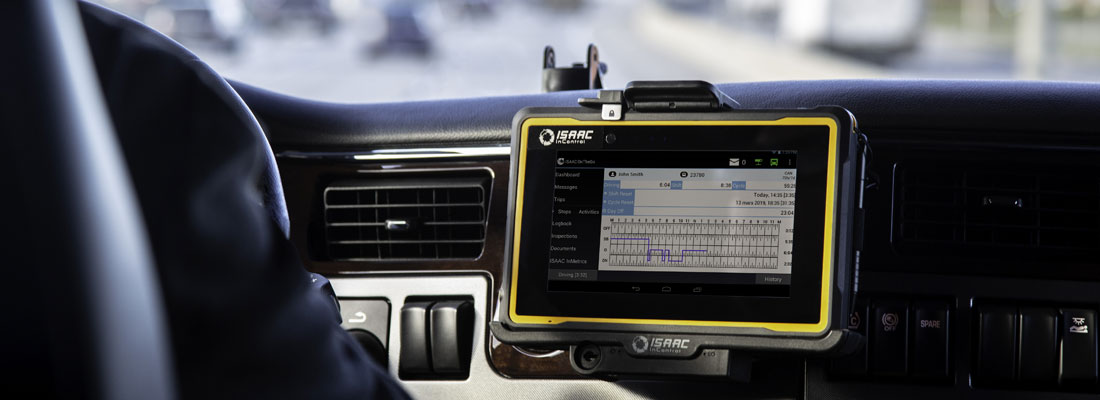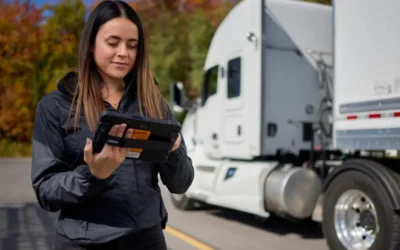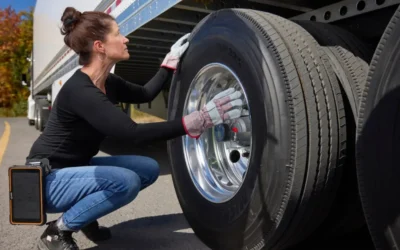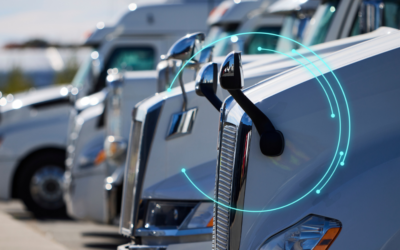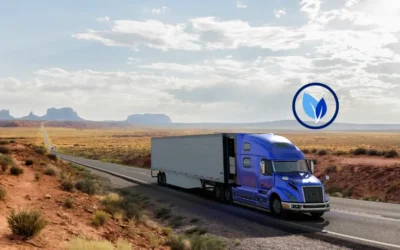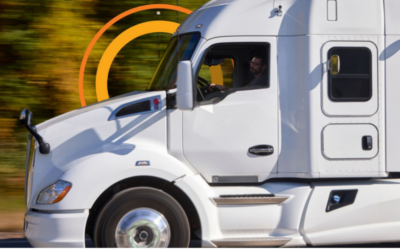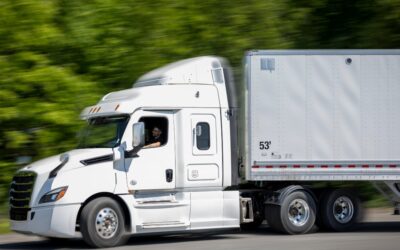You could approach the decision-making process by envisioning how your ELD solution will fit the running of your operations. To assess your needs, you should determine how mission-critical your fleet management solution is to your business.
The case for a device supplied by the ELD provider
A supplier that offers a dedicated tablet has conducted all the research on your behalf to select the most transport-adapted display device.
A tablet designed for your needs
An ELD display device should be rugged enough to sustain harsh operating conditions inherent to the transportation industry. On average, the percentage of damaged or faulty parts on rugged equipment amounts to 2% while consumer-grade products have a 15% rate of return. Moreover, rugged devices are typically replaced every five years while consumer-grade devices are changed every two years.
The selected device needs to withstand high variations in temperature and in-cab vibration. It should also offer long battery life. But most importantly, the device must be impact-resistant. If it breaks down, not only does this incur replacement costs, but it hinders the driver’s ability to complete deliveries until you provide him with a functional device.
While researching product offerings, make sure that your model can be fixed inside the cab (as specified by the FMCSA regulations) and used outside the vehicle to take pictures of defects, scan bar codes and collect electronic signatures. Additionally, the tablet’s camera should have a flash so the driver can scan documents in a poorly lit environment.
The risks of using consumer-grade devices
Consumer grade tablets are not built for extreme temperatures and cannot remain in the truck overnight. The driver will have to bring his display device home when his shift ends, and if he forgets it at home for his next shift, the fleet manager will need to supply him with spare equipment. This entails extra set-up work such as configuring a user account on the spare equipment and ensuring that it is paired with the truck’s recorder. This extra work can, in turn, lead to potential delivery delays.
Moreover, even when the driver does remember to bring his regular device, he is still responsible for pairing his phone or tablet whenever he changes trucks and must be careful to select the right vehicle in doing so. With a typical driver’s workload, this type of oversight could easily happen and would consequently increase the likelihood of invalid roadside inspection reports, and failure to supply inspectors with required documents. When you opt for a tablet supplied by the solution provider, you can tie display devices to trucks. The rugged tablet can remain in the truck, and you consequently eliminate the risk of forgetting a device or pairing it with the wrong vehicle.
A single point of contact
If you choose a display device independently from your telematics solution supplier, you should keep in mind that you will be working with three separate companies: your phone/tablet provider (Apple, Samsung, Garmin…), your cellular company and your telematics’ vendor. When you have an issue, it will be challenging to identify the responsible party and coordinate efforts between the various suppliers. With a turnkey solution, you can expect a single point of contact to troubleshoot technical issues should they arise.
Streamlined management of your ELD solution
A consumer-grade display device involves additional operational work and costs. If you decide to upgrade the display device model or its operating system, you will need to make sure that all solution components are compatible (device operating systems and ELD software). It is worth noting that consumer-grade tablet and phone vendors release operating system updates several times per year. Apple, for instance, releases ten iOS updates per year. Google updates its Pixel smartphone’s operating system twelve times per year. If your ELD provider supports multiple brands of display devices, you need to check whether he is testing the compatibility of his solution with every operating system update. In contrast, a turnkey solution provider offering a limited number of device models can afford to dedicate more resources to quality assurance and increase the frequency of released versions.
Make the most out of the ELD implementation
ELD solutions are mission critical. Whenever the solution fails, it entails significant expenditures (IT, mechanics, vehicle, impaired operations, etc.). A display device provided by your supplier may have higher entry costs; however, it offers undeniable long-term benefits. With a turnkey solution, you are opting for a product that is designed for the specific needs of the transport industry. A rugged vendor tablet comes with quality assurance; as opposed to dealing with three different suppliers, you have access to a support team for the duration of your contract. With this in mind, it is worth noting that a driver could access his scheduled deliveries from any web browser, on any device. It is crucial, however, to pick a reliable device to manage your core business and to study the available offers on the market carefully.
Download our white paper to learn more and get a free checklist for choosing your display device.

